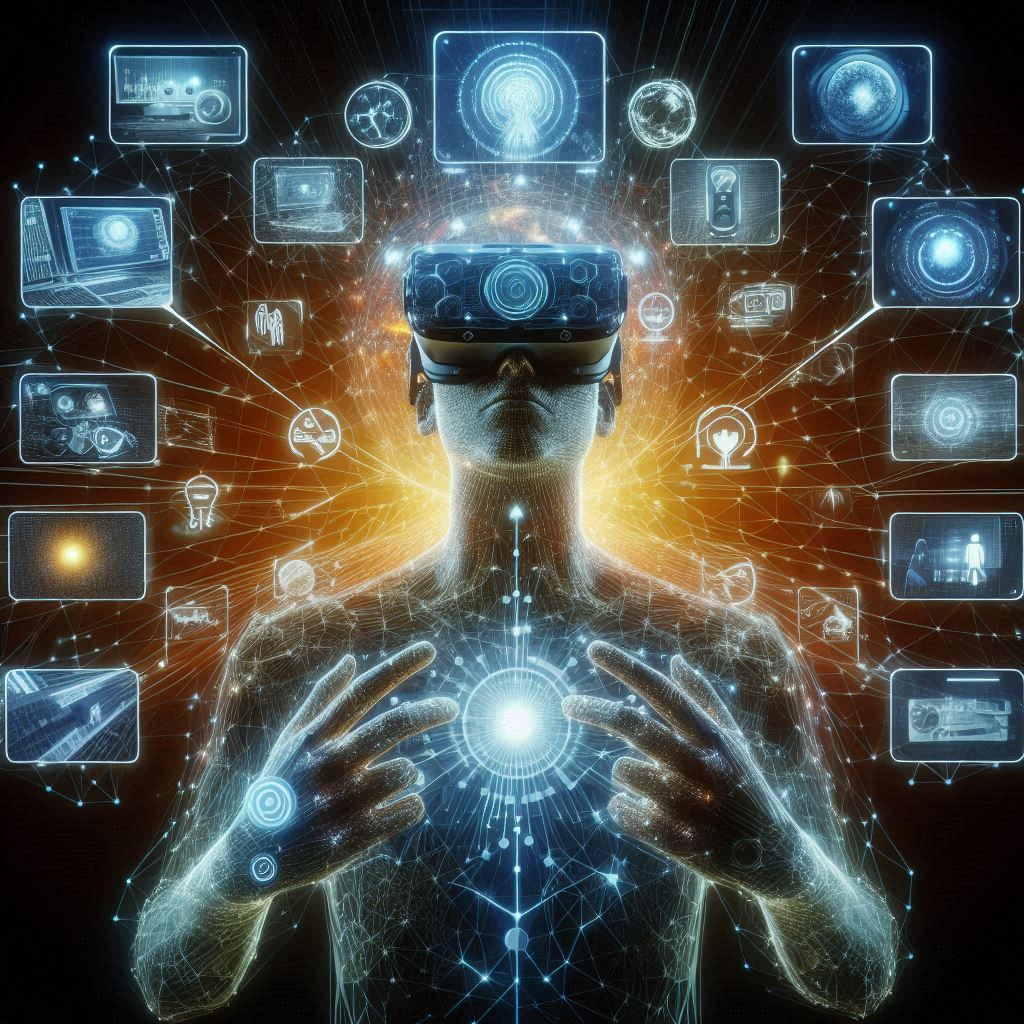The immersive virtual reality (VR) industry is undergoing significant transformations, with new trends emerging and technological advancements paving the way for expanded applications. As businesses, consumers, and industries increasingly explore the potential of immersive VR, the market is set to witness exponential growth in the coming years.
Trends Shaping the Future of Immersive VR Industry
- Enhanced Realism with Advanced Graphics and Haptics: The continued evolution of 3D rendering, spatial audio, and haptic feedback technology is making VR experiences more lifelike. Real-time ray tracing, volumetric displays, and tactile feedback are enabling more realistic simulations, which are particularly valuable in training, education, and entertainment.
- Integration of AI and VR: Artificial intelligence is playing a pivotal role in improving VR experiences. AI-driven simulations and machine learning algorithms allow for more personalized, adaptive VR environments, particularly useful in fields such as healthcare and education.
- Rise of 5G and Cloud VR: 5G connectivity is revolutionizing the immersive VR landscape by enabling faster data transfer, reduced latency, and improved bandwidth. Cloud-based VR services are also emerging, which reduce the hardware requirements on users and enable more seamless, high-quality experiences.
- VR in Healthcare and Therapy: Beyond gaming and entertainment, immersive VR is finding applications in therapeutic treatments, surgery simulations, mental health interventions, and pain management. The healthcare sector is poised to be a significant driver of VR innovation and adoption.
- Expansion into Education and Training: Immersive VR is proving to be an effective tool for training and education across various industries. From medical students practicing surgeries to military personnel undergoing combat simulations, VR is transforming how professionals learn and prepare.

Immersive VR Market Growth Projections
The global immersive VR market is expected to grow at a robust compound annual growth rate (CAGR) over the next decade. According to industry reports, the global immersive VR market was valued at USD 10.1 billion in 2024 and is projected to reach USD 34.9 billion by 2029; it is expected to register a CAGR of 28.0% during the forecast period. Key drivers of this growth include advancements in hardware, increasing consumer demand for immersive content, and the rise of enterprise VR applications in healthcare, education, and industrial sectors.
Top Companies in the Immersive VR Industry
- Meta (formerly Facebook): Meta has been at the forefront of the VR revolution, particularly with its Oculus VR headset. The company’s investments in the “metaverse” are expected to drive future growth in immersive VR experiences.
- Sony: With its PlayStation VR, Sony remains a significant player in the gaming sector, constantly improving its VR technology for a more interactive experience.
- HTC Vive: HTC Vive has carved out a niche in the enterprise VR market with applications ranging from healthcare to industrial design and education.
- Microsoft: With its HoloLens and Mixed Reality offerings, Microsoft is leading in both the VR and AR spaces, with applications in industrial training, design, and education.
- Google: Google’s advancements in VR platforms such as Google Earth VR and its Cardboard project have made VR more accessible to the public.
Regional Analysis
- North America: The U.S. remains a major player in the immersive VR industry, thanks to investments from tech giants and increasing adoption in sectors such as healthcare and education. The region accounts for a significant portion of the global VR market share.
- Europe: Countries such as the UK, Germany, and France are seeing increased VR adoption, particularly in entertainment, training, and industrial applications. The EU’s digital strategy also encourages VR innovation and application.
- Asia-Pacific: China, Japan, and South Korea are emerging as strong players in the immersive VR industry. China, in particular, is seeing a rise in VR gaming, retail, and educational applications, while Japan’s innovations in the gaming and automotive industries are contributing to regional growth.
Opportunities in the Immersive VR Industry
- Healthcare and Medical Training: There is a growing demand for immersive VR solutions in medical training, surgery simulations, mental health treatments, and remote patient monitoring.
- Enterprise Training: Companies are increasingly using VR for employee training programs, providing immersive, hands-on learning experiences in areas such as hazardous material handling, emergency response, and customer service.
- Entertainment and Social Media: Gaming, virtual concerts, social networking in the metaverse, and immersive storytelling present significant opportunities for companies to engage users in new ways.
- Retail and E-Commerce: VR technology is reshaping the retail industry by offering customers the ability to try on clothes virtually, explore stores in 3D environments, and interact with products before purchase.
Challenges Facing the Immersive VR Industry
- High Costs of Hardware: Despite price reductions over the years, immersive VR headsets and equipment remain expensive, which limits mass adoption, especially in developing regions.
- Technical Limitations: While significant advancements have been made, issues such as motion sickness, limited field of view, and suboptimal battery life in standalone devices still pose challenges to providing seamless user experiences.
- Content Availability: The availability of high-quality VR content, particularly for enterprise applications, is still limited. Developers face challenges in creating diverse and engaging experiences that cater to multiple industries.
- Data Privacy and Security: With the growing reliance on immersive VR for work, socializing, and shopping, concerns around user privacy and data security are becoming more pressing. Companies will need to implement robust cybersecurity measures to protect sensitive information.
Immersive VR Industry Segmentation
- By Component: Hardware (headsets, sensors, controllers), Software (development platforms, applications), and Services (training, maintenance).
- By Application: Gaming, Healthcare, Education and Training, Retail, Industrial Design, and Architecture.
- By End-User: Consumers, Enterprises, and Government.
- By Region: North America, Europe, Asia-Pacific, Latin America, and Middle East & Africa.
The immersive VR industry is set to transform various sectors, from healthcare to entertainment, with strong growth projected over the next decade. As technology advances and more companies embrace VR solutions, the opportunities for innovation will continue to expand. However, overcoming challenges related to cost, content development, and user experience will be crucial to ensuring widespread adoption and long-term success.
